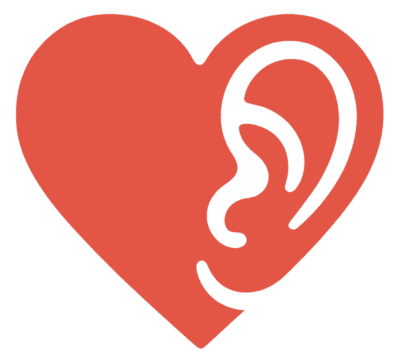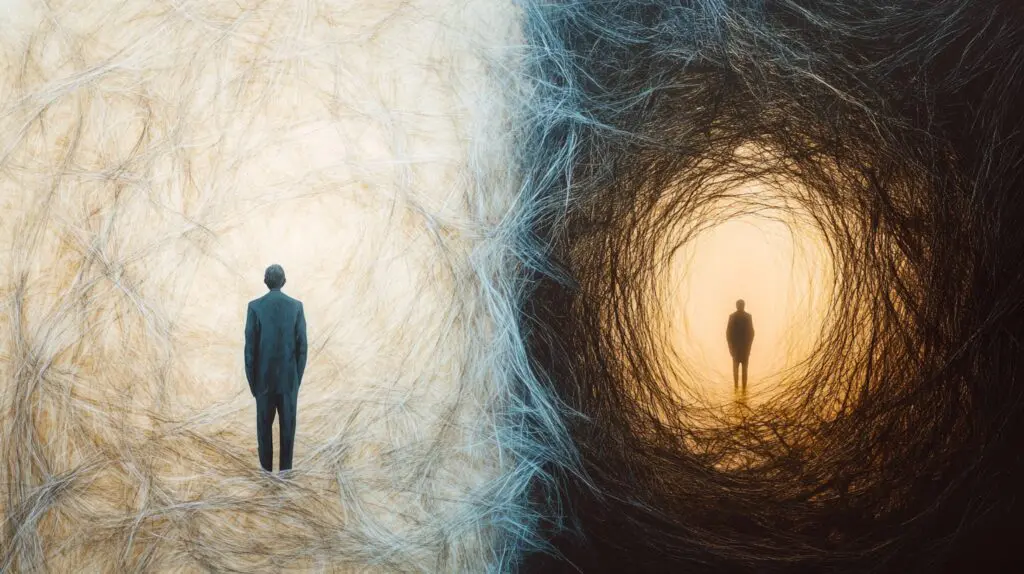You ever feel like you’re speaking a completely different language in your relationships? Like you’re trying so hard to connect, but something keeps getting lost in translation? Yeah, me too. For the longest time, I’d bounce between feeling confused, frustrated, or even like I was the problem when things felt “off” with someone. Then, stumbling across the concept of attachment styles felt like someone finally handed me a partial decoder ring.
It wasn’t a magic fix – spoiler alert, nothing really is – but understanding the basics, especially around the anxious and avoidant ends of the spectrum, brought some much-needed clarity. It helped me make a little more sense of my own patterns and those of people I cared about. I’m no therapist, just someone who’s spent a fair bit of time observing (and okay, maybe overthinking) human connection. So, I wanted to share three key insights that really clicked for me, hoping they might offer a little perspective for you too.
What Are We Even Talking About? (A Quick Refresher)
Okay, so what are we talking about here? Picture this: you know that knot in your stomach when a text goes unanswered for too long? That feeling like you need to know everything’s okay, like right now? That often gets called ‘anxious attachment.’ It’s like having an internal alarm system that’s super sensitive to any sign of distance, always worried about the connection breaking.
Then there’s the flip side – ever felt like you just need space? Like closeness starts to feel… itchy, almost suffocating? Maybe you find yourself pulling back, needing quiet time, especially when emotions run high. That’s leaning more towards ‘avoidant.’ It’s less about not caring and more about guarding your independence, like you’re afraid of getting swallowed whole by the relationship.
Of course, there are folks who navigate closeness and space pretty smoothly – ‘secure attachment’ – but let’s face it, under pressure, a lot of us wobble towards one end or the other. And boy, when anxious and avoidant energies mix, that’s when things can get really… interesting, and often pretty tough.
Insight #1: It’s Usually Fear Talking, Not Cruelty
This? This changed things for me. You know when someone close pulls away right when you lean in? It stings. Like, deep personal rejection kind of sting. It’s so easy to jump straight to, ‘They don’t care,’ ‘They’re being cold,’ or ‘Are they trying to push my buttons?!’ And sure, sometimes people are just being jerks. But I started noticing, especially when it was a pattern, that maybe, just maybe, it wasn’t actually about me. It was about them.
Imagine feeling totally overwhelmed when things get intense emotionally, like you’re drowning and need air now. That’s often what’s happening for someone with avoidant tendencies. Pulling back isn’t meant to wound you; it’s their panic button, their way of trying to cope with feeling engulfed.
Realizing this – that a lot of these push-pull behaviors come from a place of fear (fear of being left for the anxious types, fear of being trapped for the avoidant ones) – doesn’t suddenly make it okay when someone’s actions hurt. It doesn’t give anyone a free pass. But it did help me shift my thinking, just a little. Instead of instantly thinking, ‘They’re doing this to me,’ I started wondering, ‘Okay, what fear might be driving this reaction?’ It just… helped. It allows for a sliver of empathy, even amidst the frustration. Doesn’t mean you have to stick around for it, but it changes the internal narrative.
Insight #2: The Anxious-Avoidant Trap is Real (and Rough)
Oh, this dynamic. If you’ve been in it, you know. It’s almost magnetic, in a crash-and-burn sort of way. This is where someone with anxious tendencies and someone with avoidant tendencies get locked into a painful cycle. People talk about the anxious-avoidant trap, and honestly, “trap” feels like the right word.
Here’s how it often plays out, based on what I’ve seen and read informally:
- Things start okay, maybe even exciting. The avoidant partner might enjoy the initial chase or attention, and the anxious partner feels pursued and secure (for a moment).
- As intimacy deepens, the avoidant person starts feeling overwhelmed. Their need for space kicks in. They pull back – maybe subtly at first (busier schedule, less communication), or maybe more obviously.
- This withdrawal triggers the anxious person’s fear of abandonment. Their instinct is to close the distance – more texts, more calls, seeking reassurance, asking “what’s wrong?”.
- This pursuit makes the avoidant person feel even more engulfed, confirming their fears. They withdraw further, needing even more space to feel safe.
- You see where this is going? It becomes a self-perpetuating loop. The more one pursues, the more the other retreats, which intensifies the pursuit, which intensifies the retreat… Exhausting.
Being caught in the anxious-avoidant trap can feel incredibly confusing and lonely for both people. The anxious person feels perpetually unseen and insecure, craving a connection that feels just out of reach. The avoidant person feels constantly pressured and misunderstood, craving space that feels constantly invaded. It’s a recipe for mutual frustration and hurt. Recognizing this pattern doesn’t magically solve it, but naming it – seeing it as this specific, known dynamic – can be the first step toward understanding what on earth is happening.

Insight #3: Awareness is Your Starting Point, Not a Magic Wand
So you’ve read a bit, maybe you recognise yourself or your partner in these descriptions. You see the patterns, maybe even the anxious-avoidant trap playing out. Great! Awareness is huge. Seriously, it’s the necessary first step. But – and this is a big but – it’s not the finish line.
I definitely fell into this trap myself early on. “Aha!” I thought, “Now I understand why X happened!” And I expected things to magically shift. They didn’t. Knowing why someone pulls away doesn’t stop it from hurting. Knowing why you crave reassurance doesn’t make the anxiety disappear overnight.
Awareness gives you a choice point. It gives you language. It allows you to step back for a second and think, “Okay, is this my anxiety talking?” or “Is this their need for space showing up?”. It opens the door to potential change, but the change itself requires conscious effort.
That effort might look like:
- Self-reflection: Really digging into your own patterns. What triggers you? What are your go-to reactions? What do you actually need to feel secure (that doesn’t solely depend on someone else’s actions)?
- Communication (if possible & safe): Trying to talk about these dynamics, using “I” statements (“I feel anxious when…”) instead of blame (“You always pull away!”). This is hard. It requires vulnerability from both sides, and frankly, it’s not always possible or productive depending on the other person’s willingness.
- And then there’s the whole business of actually doing something different when you feel that familiar panic rising or that urge to build a wall and shut everyone out. Learning to say, ‘Hey, I need some space right now,’ instead of just vanishing, or learning to soothe your own anxiety instead of immediately demanding reassurance. Or maybe drawing a harder line, like realizing, ‘You know what? This constant back-and-forth just isn’t working for me.’ Honestly? Figuring out how not to just react on autopilot is tough. It took me forever to even start getting a handle on it, and it’s definitely not like I’ve mastered it. Some days I catch myself, take a breath, choose a different response. Other days? The old pattern wins. It’s a process, for sure.
The point is, simply slapping a label on yourself or someone else doesn’t fix the underlying issues. It’s the start of a process, often a long and messy one.
So, What Now? Moving Forward (Maybe)
Look, navigating relationships is complicated. Attachment styles offer one lens through which to view the dynamics, but they don’t explain everything. People are more complex than a single label.
These insights aren’t about diagnosing anyone or offering quick fixes. They’re just observations from one person trying to make sense of it all. For me, understanding these patterns – especially the fear beneath the surface and the push-pull of the anxious-avoidant dynamic – brought a measure of peace. It helped me direct my energy more towards self-understanding and figuring out what I need and what I can realistically expect from others.
Maybe the biggest takeaway is simply to be a bit kinder to yourself as you figure things out. It’s okay to have patterns. It’s okay to find certain dynamics difficult. It’s okay if awareness doesn’t lead to immediate change. Keep observing, keep learning (about yourself, mostly), and remember that understanding – even just a little bit more – is always a step in a helpful direction. It won’t solve everything “now,” but it’s a start. And sometimes, that’s exactly what you need.
Frequently Asked Questions
What are practical steps to start changing relationship patterns based on attachment awareness?
Begin with self-reflection to understand your own triggers and needs, communicate openly using ‘I’ statements when safe, and practice self-soothing techniques. Recognizing and naming patterns is a first step toward making conscious choices and developing healthier behaviors.
Why do people sometimes pull away or seek closeness in relationships?
Pulling away often stems from fear—avoidants may fear engulfment or losing their independence, while those seeking closeness may fear abandonment. These responses are usually driven by underlying fears rather than a lack of care.
What is the anxious-avoidant trap in relationships?
The anxious-avoidant trap is a dynamic where one partner seeks closeness and reassurance (anxious) while the other seeks space and independence (avoidant). This cycle often leads to push-pull behaviors, confusion, and emotional frustration for both parties.
How can understanding attachment styles help me improve my relationships?
Knowing about attachment styles helps you recognize your own patterns and those of others, enabling better communication and empathy. It allows you to understand why certain behaviors occur and how to navigate conflicts more effectively, fostering healthier connections.
What are attachment styles and how do they affect relationships?
Attachment styles are patterns of behavior and emotional responses that develop in early relationships and influence how we connect with others. They include secure attachment, anxious attachment, and avoidant attachment, each affecting our communication, trust, and intimacy in relationships.




